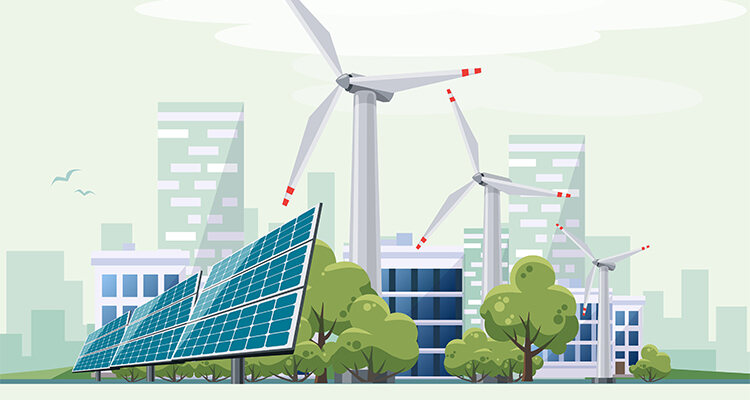
To support the green energy transition, 2024 must be a year of collaboration
Reflecting on the past year, 2023 has brought both opportunity and challenges for the entire energy community. Macroeconomic factors have taken hold and the need to transition to cleaner, greener energy gets more urgent by the day. Within the solar industry, leaders and investors alike are recognizing the need to build trust and create transparency across the board in order to collaborate for the greater good of our planet.
As we wrap up 2023, many of us are looking ahead to 2024 and what the year might hold for the solar industry, the energy community at large, and of course, how we can accelerate the energy transition. I believe that the only way we can scale up green energy deployment and achieve a net-zero future is by working together, and 2024 will be a springboard for this.
 Recently, Trina Solar delivered a speech and hosted a panel discussion for industry leaders and investors in London. Our core message to everyone in the room was that we must unite for a bigger goal in order to drive the energy transition in EMEA and establish ways that we can get moving to build partnerships and create shared goals to meet the global demand of achieving a net-zero future.
Recently, Trina Solar delivered a speech and hosted a panel discussion for industry leaders and investors in London. Our core message to everyone in the room was that we must unite for a bigger goal in order to drive the energy transition in EMEA and establish ways that we can get moving to build partnerships and create shared goals to meet the global demand of achieving a net-zero future.
The overwhelming consensus was that the industry is willing to engage and discuss the future of energy together, and at the heart of this is trust, collaboration, and transparency. While this is positive, there is a great deal of work to be done in the year ahead that will underpin the work we all do.
Key considerations for the solar industry in 2024
Knowledge sharing
Building long term collaborations within our industry will be high on everyone’s agenda in the coming year. At Trina Solar, we see every single business in solar photovoltaics (PV) as part of one team – we’re all in the same boat. This understanding is crucial between businesses, as we must work together as peers to achieve our shared goals. This also means establishing strong partnerships with customers that are built on trust and shared expertise for the greater good.
Sustainable investments
Sustainability will also be a critical consideration in the next 12 months, building on what many industry leaders have achieved in recent years. Sustainable investment, maintaining ESG standards and reporting, green manufacturing and transparent supply chains must all be the norm in the solar industry so that, through and through, we are as green as we possibly can be. This must be at the forefront of every decision each stakeholder makes, and businesses must be held accountable for their actions in order to build trust. At a higher level, new sustainability regulations could be one way to better support the solar industry to move forward united.
Affordability
In a period of economic downturn across markets, it’s crucial that renewable energy is affordable for everyone. At Trina Solar, our purpose is to provide solar energy for the many, not just the few. This accessibility is only possible with free and open trade environments, which prioritize innovation and wider choice for consumers. Otherwise, solar deployment targets simply cannot be met, jeopardizing the energy transition. Localized manufacturing could be one way to tackle this, reducing costs while also improving the sustainability of production.
Widespread support
Solar PV must also be part of a holistic new energy system that incorporates not just solar PV, but also other technologies such as wind, hydro power, hydrogen, heat pumps and storage. The Internet of Energy is a great example of the connectivity and synergy that green energy can provide, and it must be embraced. Taking this approach is a great way to build bridges across different sectors of the energy community. It is my hope that as well as working with other renewable energy suppliers and manufacturers, the solar industry will also be open to discussions with incumbent energy players to support the greening of the entire industry.
Infrastructure improvements
Next, there needs to be significant grid and infrastructure development at a national level. This will take a lot of investment and a lot of determination to encourage authorities to support new infrastructure that will enhance the work we are doing, as this is much larger than any individual business. This, and all the above, will rely heavily on players across the industry collaborating and cooperating with one another, sharing knowledge and spearheading new initiatives to ensure solar never stands still.
Transparency will be the foundation of relationships with both customers and partners, and one way that this could be achieved is by creating a more transparent supply chain built on a code of conduct. By committing to the highest standards, together, we can eliminate frictions that block the acceleration of solar and other renewable energy solutions and drive success for a cleaner, greener future.
For a list of the sources used in this article, please contact the editor.
Tim Day
Tim Day is an Investment Fund Manager at Trina Solar. Trina Solar was founded in 1997. As a global leading provider of photovoltaic (PV) module and smart energy solutions, Trina Solar delivers PV products, applications, and services to promote global sustainable development. Through constant innovation, Trina Solar continues to push the PV industry forward by creating greater grid parity of PV power and popularizing renewable energy. Trina Solar’s mission is to boost global renewable energy development around the world.
www.trinasolar.com